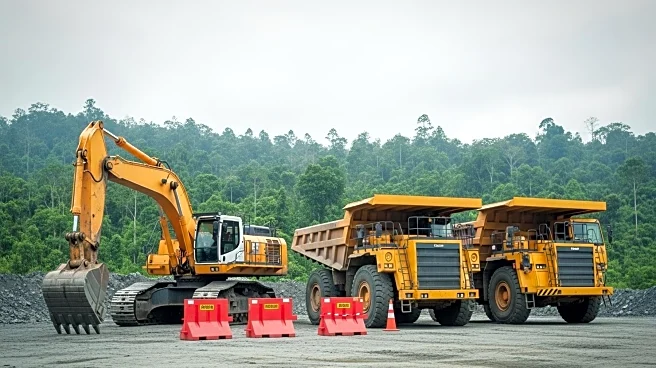What's Happening?
The mining industry is increasingly vulnerable to political risks, which can arise from governmental actions, socio-political instability, and strategic resource nationalism. These risks are particularly pronounced due to the long lifecycles of mining projects, immovable assets, and the strategic importance of mineral resources. Political risk assessment involves evaluating regulatory stability, resource nationalism trends, historical precedents, and stakeholder alignment. Resource nationalism, a significant threat, manifests through government actions such as expropriation, forced renegotiation, windfall profit taxes, increased royalty rates, and export restrictions. Recent examples include Mali's confiscation of gold and Indonesia's export bans on unprocessed minerals. Political transitions, election cycles, and social factors also contribute to the risk landscape, affecting project approvals and continuity.
Why It's Important?
Political risks in the mining sector have substantial implications for global supply chains, investment strategies, and economic stability. Companies face challenges in maintaining profitability and operational continuity amid changing regulations and government interventions. Resource nationalism can lead to increased costs and reduced foreign investment, impacting global mineral supply and pricing. The industry's success during high commodity price periods can paradoxically trigger governmental actions that threaten profitability. Understanding and managing these risks is crucial for mining companies to navigate complex geopolitical landscapes and ensure sustainable operations.
What's Next?
Mining companies must develop comprehensive strategies to manage political risks, including risk assessment frameworks, contractual protections, political risk insurance, and stakeholder engagement strategies. They need to monitor emerging trends such as technology-related risks, ESG-driven pressures, and resource transition politics. Effective management involves building relationships with local communities, engaging with industry associations, and leveraging international investment treaties. Companies must remain vigilant during political transitions and election cycles, adapting to new policies and regulatory changes to mitigate risks and maintain operational stability.
Beyond the Headlines
The intersection of environmental regulations and political risks presents additional challenges for mining companies. Evolving standards, retroactive applications, and jurisdictional conflicts can increase compliance costs and operational uncertainties. Climate policies, carbon pricing, and energy transitions further complicate the risk landscape. Social license to operate, driven by community expectations and environmental performance, is increasingly critical for project success. Mining companies must balance economic objectives with social and environmental responsibilities to maintain stakeholder trust and regulatory goodwill.










